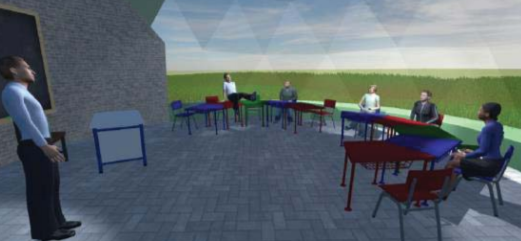An EEG-based Evaluation for Comparing the Sense of Presence between Virtual and Physical Environments
PubDate: June 2018
Teams: University of Geneva,Cyprus University of Technology
Writers: Evangelia Baka;Kalliopi Evangelia Stavroulia;Nadia Magnenat-Thalmann;Andreas Lanitis

Abstract
The current study concerns the identification of possible differences in perception between the virtual and the real world in terms of the effect on brain activity. For this reason, an EEG device was used to capture participants’ brain activity in different brain areas during their exposure to different virtual and real environments. The environments considered in this study portray a classroom environment with a scenario suitable for teacher training and professional development. The first aim of the experiment is to investigate if exposure to a virtual environment can affect motor, cognitive or other function of the users, and the second aim is to test if the graphics content and nature of such an environment can influence the user experience. During the study, the optimum duration of exposure in a virtual environment was also assessed by measuring the time that the brain needs to perceive and adapt to the new state. Our results, consisting of EEG data analyzed in 10 Regions of Interest (ROIs) and responses from an Igroup Presence questionnaire, indicated a significant difference in each brain area, especially in the frontal and occipital region, when a participant was exposed to a non-realistic virtual environment, compared to a realistic one, highlighting the impact of the selected virtual environment design. The results of the experiment can play an important role in defining the characteristics of optimal virtual environments for virtual reality-based training applications.
